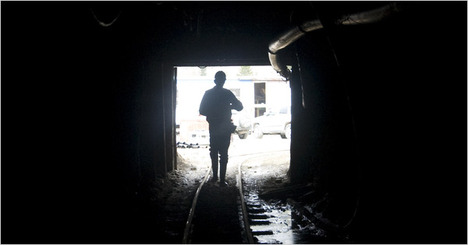 “A consulting geologist, Ben Porterfield, exiting the Drumlummon Mine.” Source of caption and photo: online version of the NYT article quoted and cited below.
“A consulting geologist, Ben Porterfield, exiting the Drumlummon Mine.” Source of caption and photo: online version of the NYT article quoted and cited below.
(p. 14) Marysville, a dot of a town in the mountains near Helena, was covered in gold dust in its heyday in the late 1800s. It was home to one of the great mother-lode gold and silver fortunes of the West, the Drumlummon Mine. Then it petered out — familiar story — to near ghost-town status through the long decades after the mine closed around 1904.
. . .
Old mysteries of law and public relations cloud the story of the Drumlummon — especially how and why it closed in the early 1900s. Its owners at the time, the Rothschild family from Europe, were locked in an extended court battle over nearby mining claims when they announced in 1901 that the mine’s lower levels would be allowed to flood because profitable ore had not been found there.
RX’s mining operations director, Mike Gunsinger, said he became convinced in reading the old accounts that the Rothschilds had lied — flooding the mine not because it was played out, but to conceal its riches. The company suing the Rothschilds eventually won, but they never had the capital to drain the water. A last attempt, by a new set of owners, failed in 1951.
“I think it was a dog-in-the-manger attitude,” Mr. Gunsinger said, referring to the Rothschilds. “If I can’t have it, nobody can.”
That told him, he said, that the gold was still down there.
For the full story, see:
KIRK JOHNSON. “Marysville Journal; As a Near Ghost Town in Montana Watches, a Gold Mine Is Reborn.” The New York Times, First Section (Sun., May 2, 2010): 14.
(Note: the online version of the commentary was dated April 30, 2010.)
(Note: ellipsis added.)
